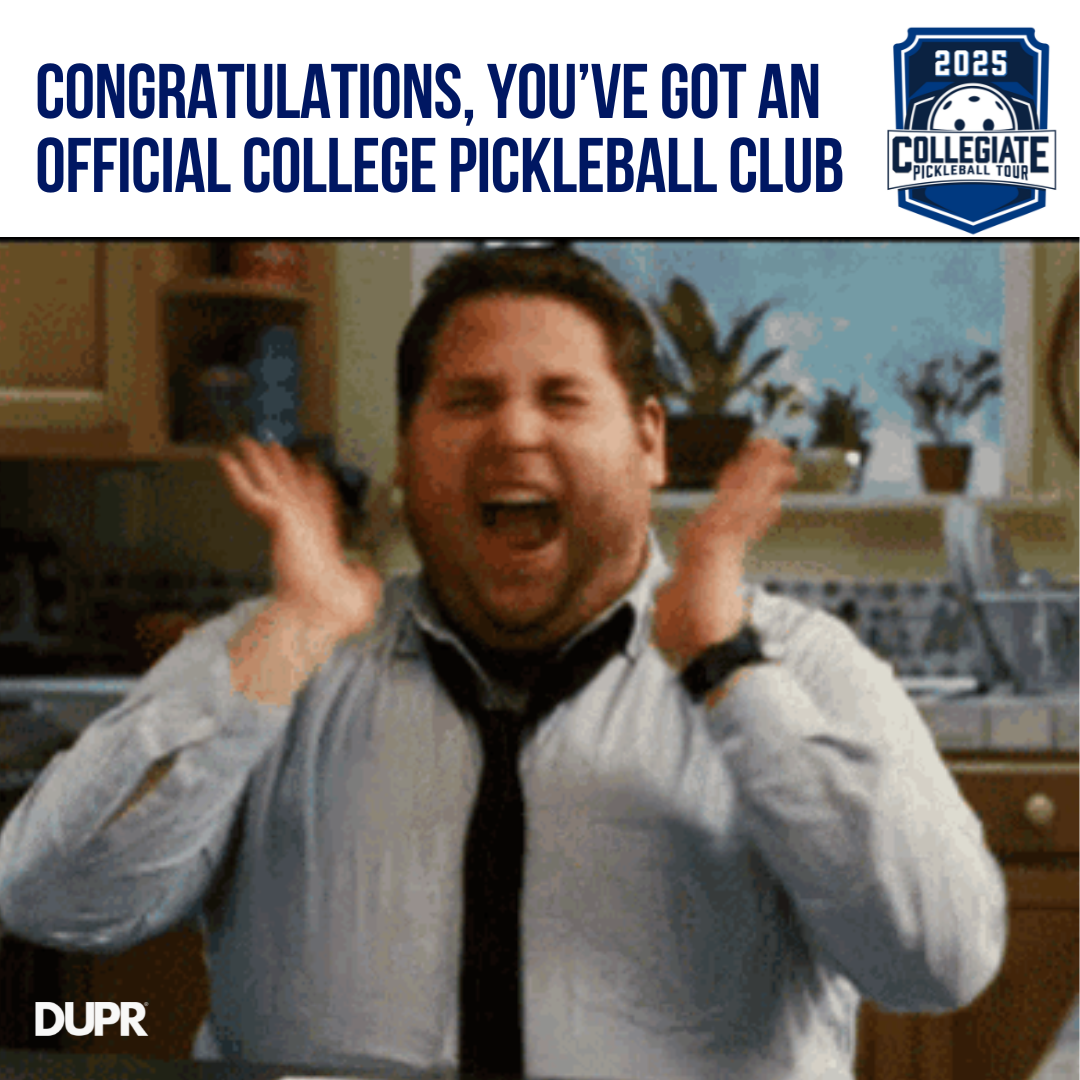How To Start a Pickleball Club at Your College
%20(Instagram%20Post).jpg)
Thinking about starting a pickleball club at your university? You’re not alone. With over 300 colleges in the U.S. already on board, the sport is booming, and your school could be next. Whether you're looking to play for fun, build a competitive team, or just grow the pickleball community on campus, this step-by-step guide will walk you through how to make it happen.
Step 1: Check Your School’s Club Requirements
Every college has its own process for approving new student organizations, so your first move is to find out what your school requires.
A quick search like “[Your School Name] how to start a club” will usually point you in the right direction.
Key things to look for:
- Registration deadlines
- Required leadership roles
- Minimum number of members
- Whether you need a faculty or staff advisor
Quick Note: Most colleges distinguish between “student organizations” and “club sports.” You’ll usually need to register as a student organization before applying for club sport status, so start there to save time.
Once you’ve submitted everything and your application is approved, congrats! You’ve got an official pickleball club on campus. Now it’s time to build it.

Step 2: Recruit Consistent Members
In the early stages, it’s all about momentum. Use whatever equipment and space you have access to and get creative with recruiting.
Here are some great ways to find players:
- Visit pickleball classes on campus and invite students
- Show up at intramural tournaments and talk to participants
- Participate in your school’s club fair
- Build a simple website or social media presence so people can find you online. Choose a username or domain clearly linked to your school and pickleball club.
- Post flyers and add a QR code linking to the social media account or talk to players at local pickleball courts
- Reserve tennis/pickleball courts on campus or ask local facilities for discounted court time
Create a group chat or email list to keep everyone connected and informed. Be proactive: if someone shows interest, invite them personally. Make new players feel welcome by pairing them with others at their level and offering to teach the basics. This is what builds community and keeps them coming back.

Step 3: Grow Your Club
Once you have a core group, it’s time to scale.
- Set Weekly Practice Times: Establish consistent meetups to create structure. It also gives you a clear answer when someone asks, “When can I join?”
- Build Your Equipment Supply: Start collecting paddles, balls, portable nets, and hoppers. Ask experienced players or alumni if they can donate gear. You can also contact local businesses for sponsorships or fundraising support.
💡 Special Tip: Create a DUPR Digital Club to manage your members and track match results. It gives your club a professional presence and makes it easier to organize games, display your location, and help players improve with accurate ratings.
Start your Digital Club for FREE here.
Step 4: Compete with Other Schools
Once you have enough players and equipment, take things to the next level: college competition.
- Connect with nearby schools that have clubs
- Use social media or the DUPR club directory to find opponents
- Organize scrimmages or join round robins and tournaments
- Start incorporating drills to strengthen your team’s skills
- Invite local coaches or high-level players to run clinics
Starting a pickleball club at your school is one of the most rewarding ways to make an impact, meet new people, and grow the game. It doesn’t take much to get started. All you need is a few players, some paddles, and a little passion.
Check out the Collegiate Pickleball Tournament (CPT) calendar to find upcoming events. CPT matches are co-ed and formatted for teams of 2 men and 2 women. Schools can bring multiple teams, and top performers may even earn scholarships or bids to the Collegiate National Championship in April.
Want even more help? Download our 24-page Collegiate Pickleball Club Guide, written by past and present club presidents. It’s full of detailed strategies, sample meeting templates, fundraising ideas, and practice plans that worked at real schools.
📩 Have questions? We’ve got answers. Email us at college@mydupr.com
Let’s get your school on the map. 🏓



.webp)








